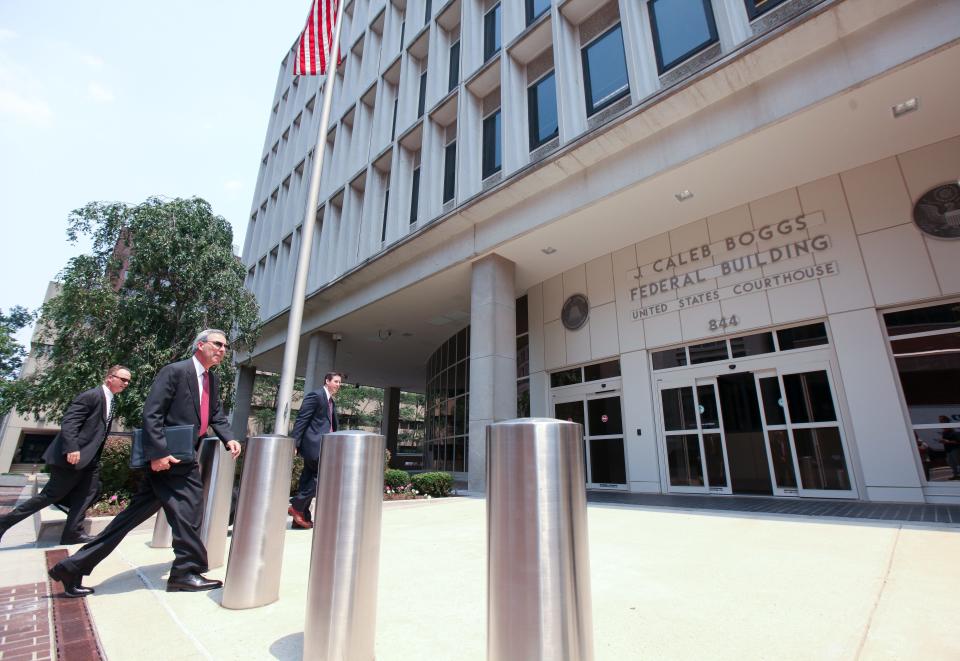The nation should follow Delaware’s lead on transparency. Here's why | Opinion
You’d think, if someone sued you, it would be fair to ask who they are.
And you’d be right. A foundational concept in American jurisprudence is that courts are open to all, and those using the courts have to themselves show up.
But some very wealthy private financiers who fund, control, and reap windfall profits off of litigation don’t believe those concepts apply to them. That’s how the Federal District Court of Delaware has found itself in a high-stakes debate about transparency and the purpose of the courts.

The conflict began when the District of Delaware’s Chief Judge, Colm Connolly, issued a pair of standing orders in April, requiring that everyone coming before the Court must disclose third-party litigation funding tied to their case. Connolly’s orders attempted to bring much-needed transparency to the complex, hidden litigation finance industry, but the billion-dollar funds that use lawsuits to profit are pushing back.
The orders, while notable, are neither improper nor all that unusual. The Federal Rules of Civil Procedure have been moving toward greater ownership transparency and similar requirements in courts across the nation have been in place for years.
Transparency orders come in response to the growing permissibility of third-party litigation funding. TPLF is an investment strategy that has attracted billions of dollars worldwide and has in the past twenty years changed the U.S. legal system. Under TPLF arrangements, an investor or investment group pays for all legal expenses in exchange for a hefty, upfront portion of the potential award or settlement. Agreements are often written, in either letter or spirit, to allow the funders to control the litigation, the choice of counsel, settlement decisions, and more.
Often, multiple private investors back cases and sometimes the claims change hands mid-litigation, as if they were a mutual fund, a credit-default swap, or a mortgage-backed derivative. Yet in many U.S. Federal Courts there are still no disclosure requirements. This means that defendants, judges, and juries must often participate in cases without knowing who is funding and driving the case forward, or what influence the funders may have over the proceedings.
TPLF fuels more litigation, drives up legal costs on both sides, and often influences case strategy. TPLF can, and is, also used by foreign competitors to put U.S. national and economic security at risk. Some of the biggest funders appear, based on what little can be gleaned from court records, to be sovereign nation funds — foreign government money backing claims in U.S. courts against U.S. companies.
Recent analysis shows that the TPLF business is booming in the U.S. to the tune of $13 billion dollars in 2021, with new investments pouring fastest into patent infringement litigation.
This brings us back to Delaware. The Federal District Court of Delaware is a hub for patent infringement litigation because Delaware is a popular location to incorporate large companies.
Connolly’s orders require some basic disclosures, including the identity of any third-party funders in cases before the Court and whether their approval is necessary for legal strategy decisions and settlement conditions. This added transparency would allow everyone involved in the case — including the judge and jury — to know who the real party behind a lawsuit is, which is critical information for, among other things, ethical considerations like whether a judge should recuse themselves from a case. It also prevents David v. Goliath narratives from being used to sway juries, when in fact it’s more like private equity versus American manufacturers.
The order has already gotten results. Notably, it revealed a web of thousands of patent lawsuits backed, apparently anonymously, by a single company that sold individuals on becoming patent “owners” and signing relevant legal documents to generate “passive income.”
Unsurprisingly, the shell companies using lawsuits to make a quick buck are not happy. One company recently asked the U.S. Court of Appeals for the Federal Circuit to freeze the order, arguing that its funding and structure should be kept secret. The appeals court refused, correctly, to intervene, allowing the District of Delaware to continue shedding light on secretive and potentially fraudulent funding arrangements. Despite the Federal Circuit’s decision, two additional patent owners have now made similar appeals. Which begs the question — if these companies have nothing to hide, why are they fighting so hard to keep it hidden?
Wealthy funders will likely continue to cry foul, but it seems that, for now, Delaware will continue the nationwide push for greater transparency into the omnipresent, secretive TPLF industry. At a minimum, it might just prevent further longstanding abuse of our courts.
Jonathan Stroud is general counsel for Unified Patents.
This article originally appeared on Delaware News Journal: Delaware and TLPF: More transparency needed

